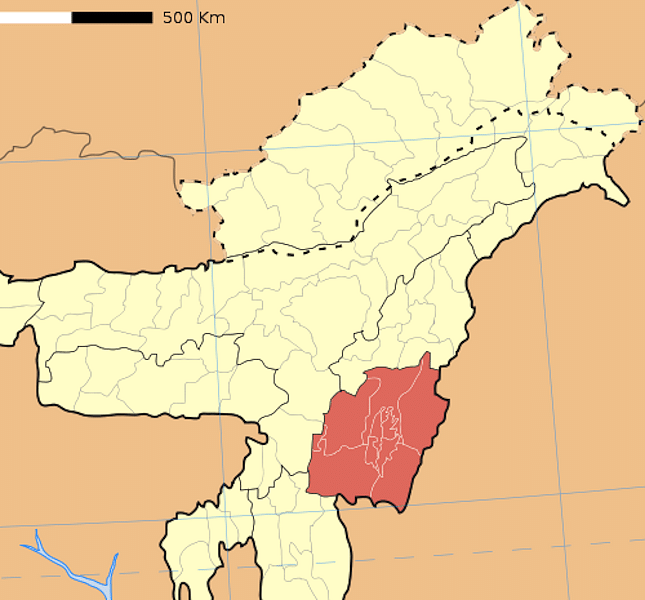Politics
The Turmoil In Manipur

Manipur has turned into a field of agitations, protests and rallies over the question of the Inner Line Permit system (ILP). What is the road ahead for the state?
For the past two weeks Manipur has been tormented by curfew and agitations by angry men and women demanding the introduction of Inner Line Permit (ILP). The protests were headed by the Joint Committee on Inner Line Permit System (JCILPS), an umbrella organisation comprising of 30 civil bodies in Manipur. JCILPS has no political affiliation and its volunteers are mostly students. The agitations escalated when the House withdrew Manipur Regulation of Visitors, Tenants and Migrants Workers’ Bill, 2015 on July 15. Manipur witnessed 12-hour long bandh on July 16 to push the agitators’ demands. The stress of ILP is to “safeguard the interests of indigenous people and fulfill their aspirations”.
The demand for ILP is however not new. Three north eastern states— Mizoram, Nagaland and Arunachal Pradesh— have ILP system which was introduced by the Britishers to protect their commercial interests. Manipur too had its own system to check the inflow of migrants, but that was abolished in 1951 by which time the state had merged with the Indian Union.
The first demand for the refurbishment of the ILP in Manipur was made in Parliament 1980 and many times after that. In 2006, an organisation named Federation of Regional Indigenous Societies (FRIEND) was formed to implement ILP. In 2012, the agitations turned violent with repeated general strikes.
The demand for ILP rose in the fear of the migrants outnumbering the indigenous people of Manipur. Manipur’s population fears that if the ILP is not introduced then the indigenous population will be reduced to a minority, as happened in Tripura.
Does that mean that the ILP is the only solution? On one hand, if ILP is implemented then Manipur will not be able to grow and diversify its economy. Manipur could benefit immensely by integrating its economy with the developed markets around it. Moreover, with its open boundaries Manipur will have better connectivity and resource-sharing policy.
But what has led to the demand of ILP in the state? The Manipur population’s demand for substantive equality. They place their demand for ILP for their protection. They argue that if Manipuri people have to exist as a community, have to have a certain degree of right over their land and not be hit hard by the mega projects, then the ILP should be implemented by the government. Other factors that trace the importance of ILP in the state are listed below.
Competition
Post-independence, there has been a substantial influx of outsiders/migrants to Manipur. This has led to increased competition for jobs, markets, business, political authority and so on. The Manipur population fears that once the Trans-Asian Highway and railways become operational, the demographics will alter further .
Meiteis, people who live in the valley are tribals and do not enjoy any special protection by the government. Any outsider can buy land there, and they fear that there will not be enough land left for the poor.
Influx of migrants
Manipur population feels that the inflow of the migrants to Manipur is destroying their culture, language, scripts and dialects. The land in the tribal belts is acquired by the outsiders (Bangladeshis) and if this issue is left unchecked, it might create heightened tension, as in Assam. Further, on the employment front, outsiders work for lower wages and this does not work in favour of the indigenous Manipuri population.
More so, the ILP is already present in Mizoram, Arunachal Pradesh and Nagaland, then why should it be not implemented in Manipur? Also, if ILP restricts the development of the state and violates the fundamental right of other citizens with respect to the freedom of movement guaranteed by the Constitution then why is it present in Mizoram, Arunachal Pradesh and Nagaland? It therefore becomes the duty of the Centre to alter its approach on ILP.
However, as pointed out earlier, if the ILP is implemented in Manipur, it will be arduous for the state to develop itself as many north-eastern states lack trained professionals like doctors, CA’s etc. Moreover, every state will then start demanding ILP which will prove harmful for national integration.
It therefore becomes pertinent for India to accept the universal perception of indigenous population and ethnic minorities. Currently only Scheduled Tribes and minorities based on religion are entitled to Affirmative Action. The centre needs to clear its stand on minorities and indigenous population. Only then can the issue of ILP in the north east be resolved.
Support Swarajya's 50 Ground Reports Project & Sponsor A Story
Every general election Swarajya does a 50 ground reports project.
Aimed only at serious readers and those who appreciate the nuances of political undercurrents, the project provides a sense of India's electoral landscape. As you know, these reports are produced after considerable investment of travel, time and effort on the ground.
This time too we've kicked off the project in style and have covered over 30 constituencies already. If you're someone who appreciates such work and have enjoyed our coverage please consider sponsoring a ground report for just Rs 2999 to Rs 19,999 - it goes a long way in helping us produce more quality reportage.
You can also back this project by becoming a subscriber for as little as Rs 999 - so do click on this links and choose a plan that suits you and back us.
Click below to contribute.
Latest